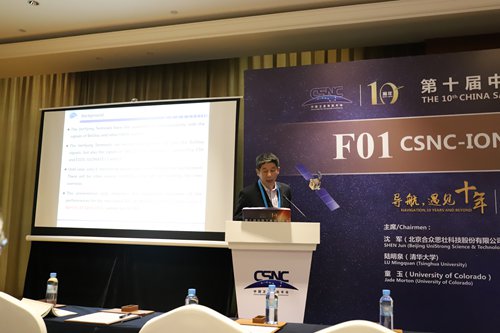BDS-3 new signals achieve ideal accuracy: official
By Deng Xiaoci Source:Global Times Published: 2019/5/23 21:08:40

Guo Shengtao, a Beijing Satellite Navigation Center official, speaks at a forum in the ongoing 10th China Navigation Satellite Conference (CNSC) in Beijing. Photo: Deng Xiaoci/GT
Monitoring outcomes show that new signals, codenamed B1C, from the China- developed satellite navigation system, BeiDou-3 or BDS-3, has "ideal" accuracy, according to system operating authorities on Thursday.
"For the sake of monitoring the integrity, availability and continuity of the BDS, the Application and Verifying System (AVS) has been set up to monitor and evaluate the services and performances of BDS," Guo Shengtao, an official with the Beijing Satellite Navigation Center (BSNC) said in a keynote speech at a parallel forum under the ongoing 10th China Navigation Satellite Conference (CNSC) in Beijing on Thursday.
Monitoring data collected from six domestic sites in the April shows that the average position accuracy of B1C signals was 3.1 meters horizontal-wise and 5.8 meters vertical-wise, which is "ideal at present," Guo told the Global Times, noting that the full constellation of satellites are not yet in place.
The AVS mainly consists of three parts: the verifying terminals that can communicate with signals from BDS and other global navigation satellite services, data analysis and evaluation platform placed in the BSNC and transmission networks, according to the official.
The platform collects all raw data from verifying terminals including navigation messages to conduct and analyze the BDS performances.
"Until now, there are only six monitoring points that have been deployed in China—in the cities of Beijing, Chengdu, Haikou, Kashi and Urumqi in Xinjiang Uyghur Autonomous Region, and Lhasa in Tibet Autonomous Region and there will be overseas ones in the future," he said without naming the potential sites.
B1C is the most up-to-date BDS-3 open signals.
Full constellation of the BDS-3 is scheduled to be fulfilled by 2020, and by then the system will provide highly accurate performances and services around the globe.
Posted in: SOCIETY